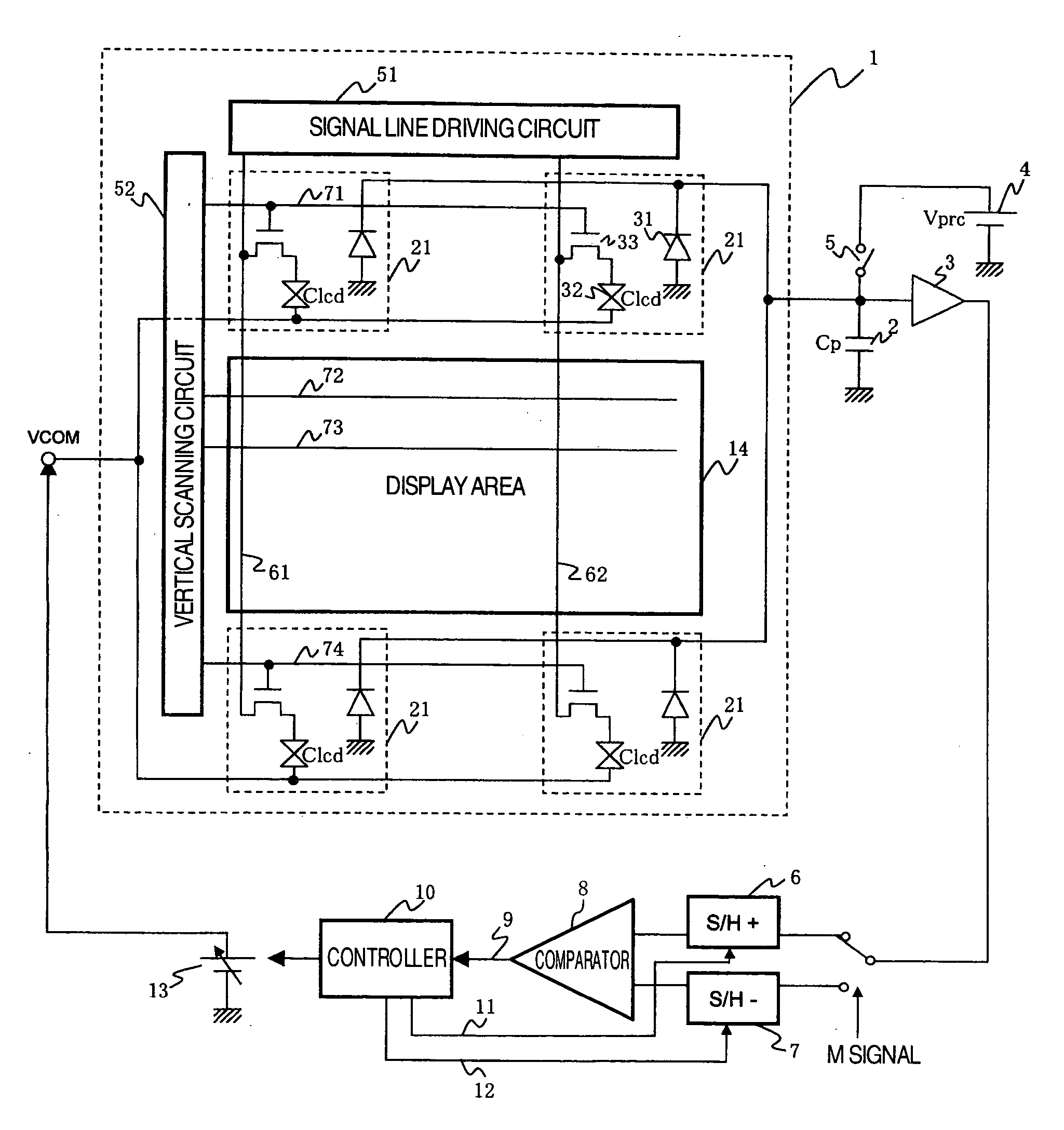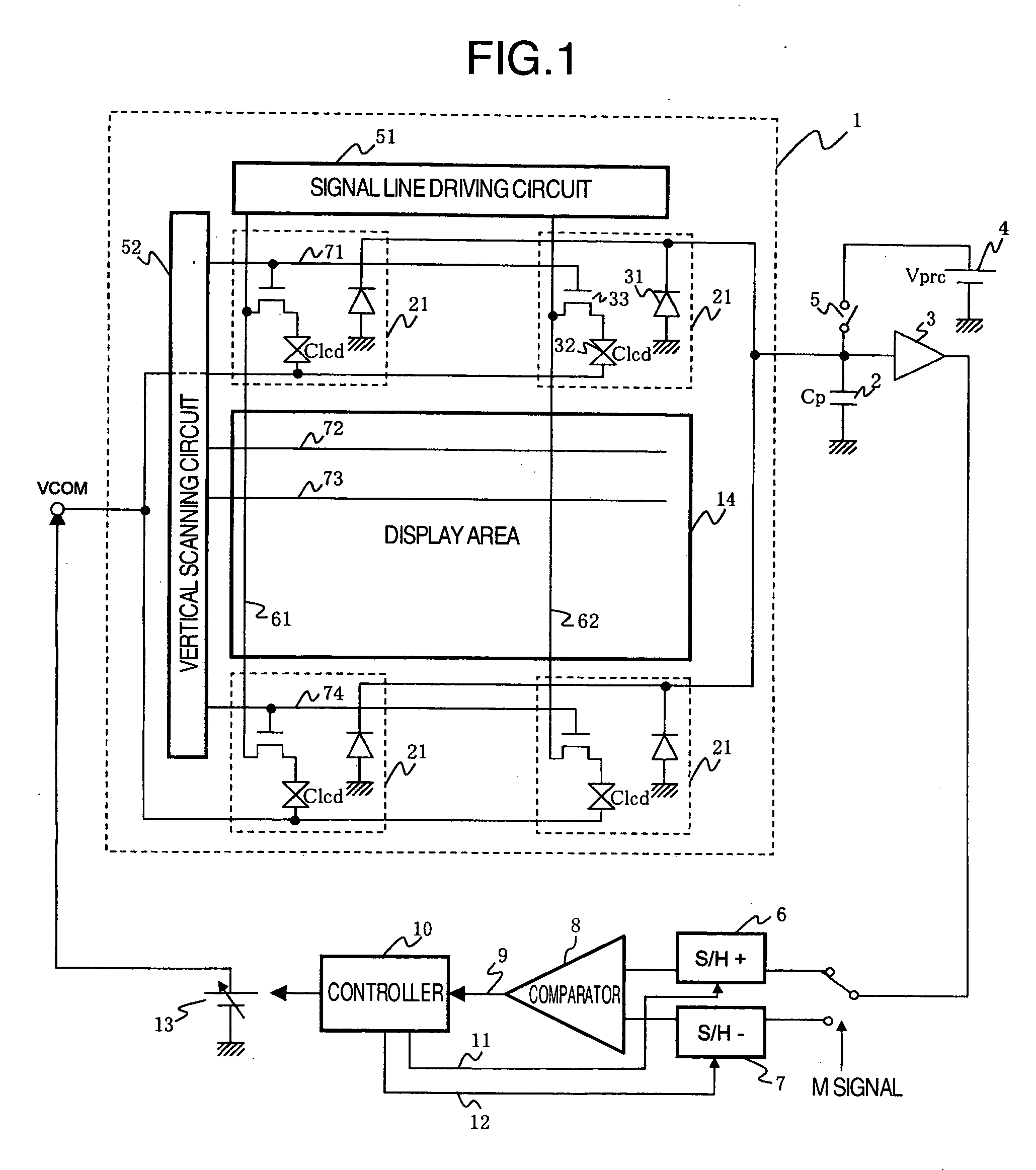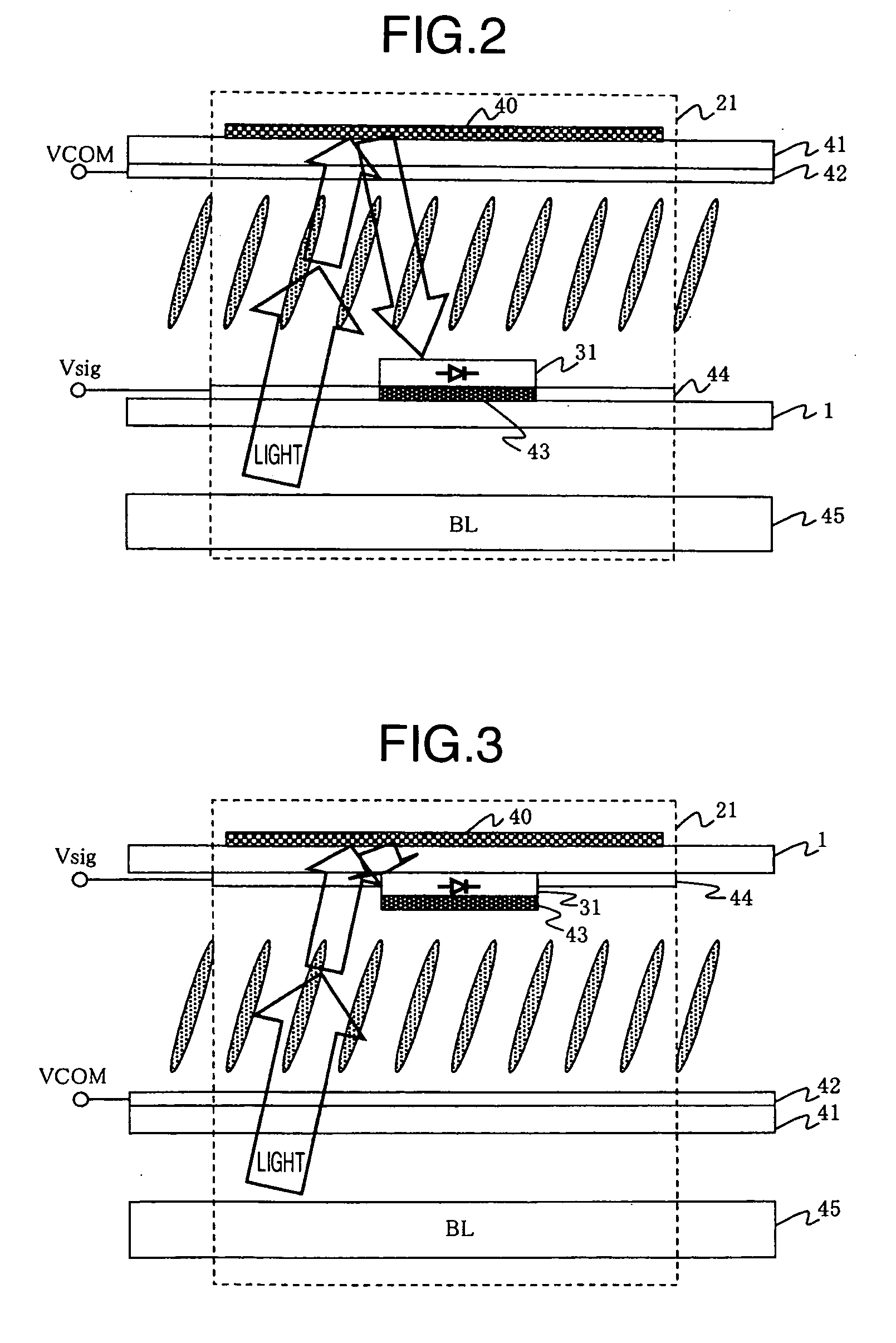Display device and method for adjusting a voltage for driving a display device
a display device and voltage technology, applied in the field of display devices, can solve the problems of increasing the cost of parts as a large number of photodiodes are used, and achieve the effects of simple circuit configuration, increased flicker detection points, and low cos
- Summary
- Abstract
- Description
- Claims
- Application Information
AI Technical Summary
Benefits of technology
Problems solved by technology
Method used
Image
Examples
first embodiment
[0027] A first embodiment will be described.
[0028]FIG. 1 is a schematic diagram illustrating an exemplary configuration of a display device having a function of automatically adjusting a common electrode voltage according to the present invention. The display device comprises a TFT array substrate 1; a precharge capacitance (Cp) 2; an analog buffer amplifier 3; a precharge voltage source (Vprc) 4; a precharge switch 5; a sample / hold circuit 6 for use when a positive signal is applied; a sample / hold circuit 7 for use when a negative signal is applied; a comparator 8 which outputs a comparison result 9; a controller 10; a sampling signal 11 for use when the positive signal is applied; a sampling signal 12 for use when the negative signal is applied; a common electrode power supply 13; a display area 14; dummy pixels 21; photodiodes 31; a liquid crystal element (Clcd) 32; TFT elements 33; a signal line driving circuit 51; a vertical scanning circuit 52; a first signal line 61; a secon...
second embodiment
[0059] A second embodiment will be next described.
[0060]FIG. 8 illustrates an exemplary layout of dummy pixels 21. While the dummy pixels 12 are positioned at four corners of the display area 14 in the first embodiment, two or more dummy pixels may be disposed along one horizontal line or along a plurality of horizontal lines, as illustrated in FIG. 8. By thus increasing the number of dummy pixels 21, variations in the characteristics of each output of the signal line driving circuit 51, and variations in the strength of flicker due to the blunted scanning signal waveform shown in FIG. 5 can be more correctly reflected to the adjustment of VCOM.
[0061] While additional dummy pixels 21 are arranged in the horizontal direction in FIG. 8, they may be arranged in the vertical direction. Also, a switch may be provided between the photodiode 31 and the precharge capacitance 2 within the dummy pixel 1, such that when a partial display is performed, the flicker strength can be measured by ...
third embodiment
[0062] A third embodiment will be next described.
[0063]FIG. 9 illustrates an exemplary layout of photodiodes 31 in accordance with the importance of luminance measurement points. When the flicker is to be suppressed preferentially in a central region of the display area 14 rather than left and right marginal regions of the display area 14, a plurality of photodiodes 31 are created in those dummy pixels 21 positioned in the central region to perform a photoelectric conversion in such a manner that more currents flow into the dummy pixels positioned in the central region, thus weighting the dummy pixels 21 according to the measuring points. In other words, a photoelectric conversion rate in the central region of the display area 14 is made different from that in the left and right marginal regions, thus permitting the dummy pixels in the central region, which supply more currents, to more contribute to the discharge of the precharge capacitance 2 and therefore largely affect the disc...
PUM
 Login to View More
Login to View More Abstract
Description
Claims
Application Information
 Login to View More
Login to View More - R&D
- Intellectual Property
- Life Sciences
- Materials
- Tech Scout
- Unparalleled Data Quality
- Higher Quality Content
- 60% Fewer Hallucinations
Browse by: Latest US Patents, China's latest patents, Technical Efficacy Thesaurus, Application Domain, Technology Topic, Popular Technical Reports.
© 2025 PatSnap. All rights reserved.Legal|Privacy policy|Modern Slavery Act Transparency Statement|Sitemap|About US| Contact US: help@patsnap.com



